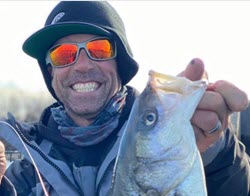
OK fish-heads, it’s getting cold and that means water temperatures in the 40s. When that happens I grab my box of metal blade baits before I head out to the water. They give me exactly what’s needed to generate reaction bites from lethargic winter bass — vibration, flash, finish, size and depth control.
My favorite is the Molix Trago Vib Blade Bait. It has a flat nose which keeps it level on the fall but with a little bit of wiggle, and it has three line tie holes on its back so it’s really easy to change the action of the bait.
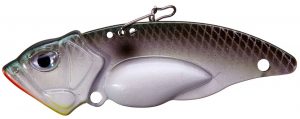
I pick my size and color to match whatever’s in the lake or river I’m fishing. I know I’ve said this a million times but I’m going to say it again — match the hatch.
Now, the Trago comes with a couple of two prong hooks that makes it virtually weedless in heavy cover. But, when I’m fishing more open water I swap them for standard three prong treble hooks. The extra prong gives me just a little bit better chance of hooking my bass. And, if I want to make one or both of them weedless in a hurry all I have to do is snip off the front barb on my standard trebles.
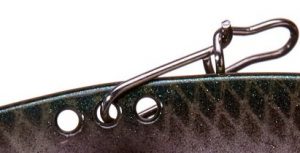
The action of my lure is controlled by which hole I use. The one that’s the most forward is for when the water’s cold and clear, or when the bite is a little slow. That hole gives the lure a tighter vibration. I go to the back hole when the water’s dingy and a little warmer, or when the bite is more aggressive. It creates a wider wobble.
Most of the time, though, I use the center hole. It makes a nice compromise between the two extremes and will be effective under a lot of different conditions.
My rod is a little shorter than normal. I go with a 7-foot or a 7-foot, 4-inch model in a medium or medium-heavy action depending on how heavy a bait I’m throwing. The shorter length keeps me from moving the lure too far or too fast. That’s important because we’re talking here about winter fishing in cold water.
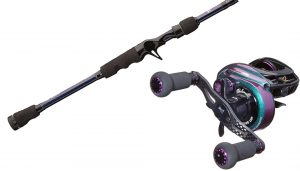
My usual choice is an Abu Garcia Ike Power Casting Rod, 7-foot with a medium-heavy action.
My reel choice is a higher speed Abu Garcia REVO MGX model. Something between 7.1:1 and 8.0:1 is about right. I want the higher gear ratio because a lot of the time the bite will happen with the fish moving straight at you. You need to pick up line quick when that happens.
About 70 percent of the time I fish with straight fluorocarbon. It gives me great lure control and will hold up pretty well under most conditions. When I’m fishing in really heavy cover I switch to straight braid. It’s a little tougher and will let me pull fish out when fluorocarbon might break.
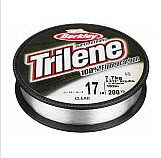
My fluorocarbon is always Berkley Trilene 100 percent Fluorocarbon. I’ll use anything between 10- and 20-pound-test. I have to say though that 12- or 15-pound-test is my favorite braid is Berkley 9X Braided Line. Anything between 20- and 30-pound-test will get the job done.
Now we come to the good part: How to fish these lures.
I have three basic techniques I use. The first one is the easiest, and the least used. It’s the slow roll. All you do is make a long cast, let the bait fall on a semi-slack line and then bring it back slow and steady. The important thing here is to make sure the bait drops down to where the fish are holding, and that you stop cranking for a second or two every 10 turns of the reel handle.
The second technique I call stroking. I use it for when the fish are deep like when they’re along a bridge piling or a bluff wall that drops straight down, away from the bank. I let my lure fall straight down and then snap it back up by moving my rod tip from 3 o’clock to 12 o’clock. Make sure you always keep your line semi-slack on the fall and watch it carefully. Most of your bites will come on the fall.
The third way I fish metal blade baits is with a technique I call the paint brush. It works just like you were painting a wall in front of you with a brush moving up and down. Basically it’s the same as stroking except that it’s more subtle. I only raise the lure a couple of inches, say from 3 o’clock to 2 o’clock. This is a super good presentation in cloudy water or when the bass are slow and the bite is so soft you almost can’t feel it. That slow and soft bite happens a lot in the winter.
There’s still a lot of winter left. Break out your blade baits, or grab a few new ones from Molix, and go fishing. You won’t be sorry.

Like Ike on Facebook, and follow him on Instagram for fishing and fun content.
Subscribe to Mike’s YouTube channel, Going Ike, to ensure you see every adventure video.
Return to Mike Iaconelli’s website